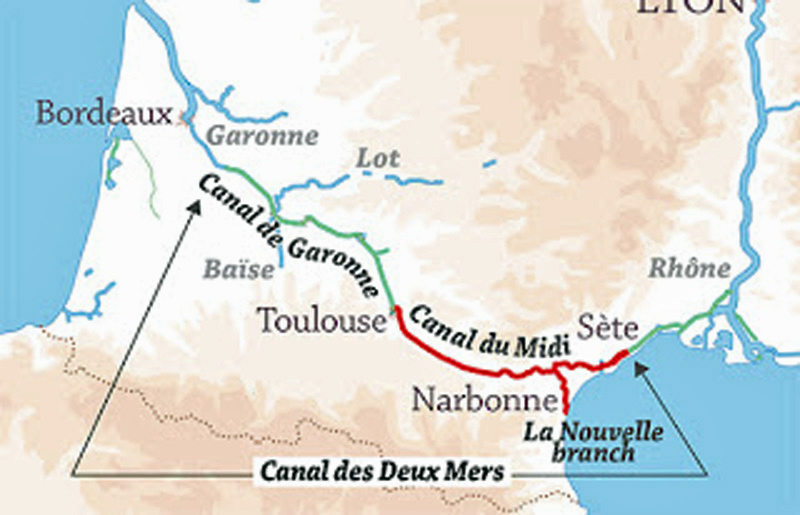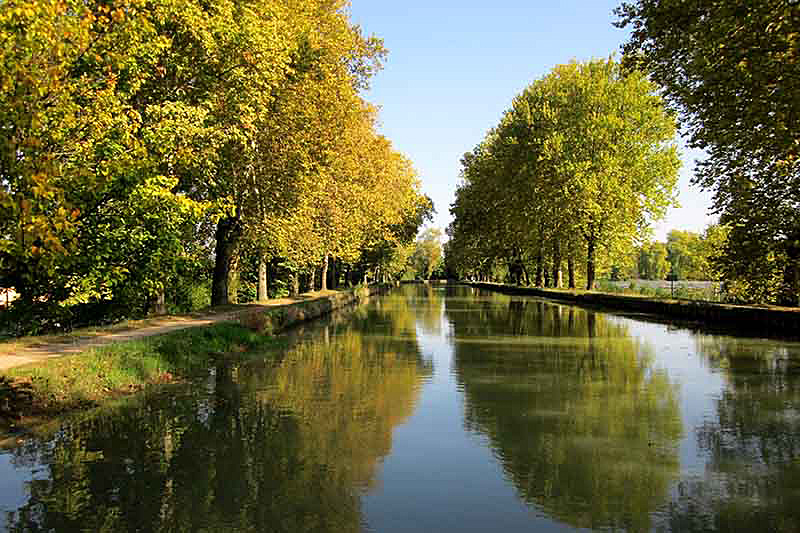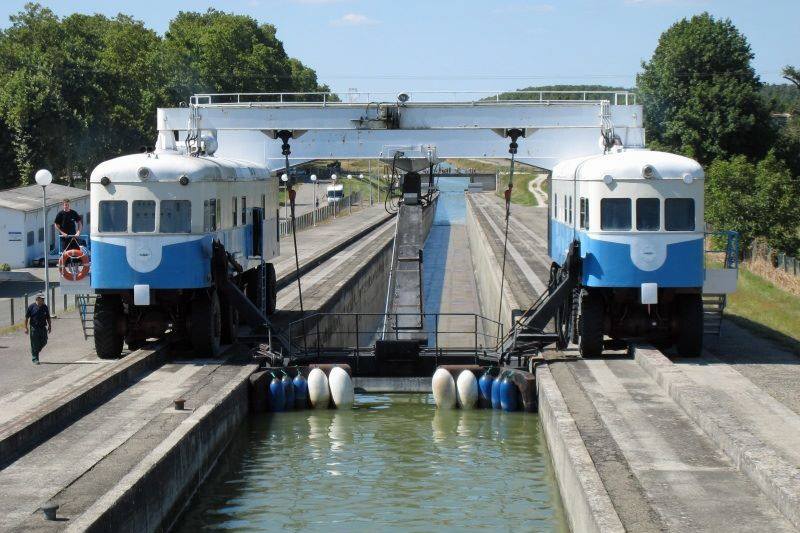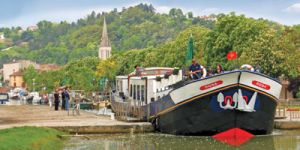Barging in France: The Canal de Garonne
About the Canal de Garonne
The Canal de Garonne stretches over 120 miles and has 53 locks. It begins at its junction with the Canal du Midi in Toulouse and travels west to Castets-en-Dorthe, where it opens into the tidal Garonne River. The port of Castets used to be very busy with barges lining up, waiting for high tide so they could continue with their cargo on to Bordeaux.

Canal des Deux Mers
This canal is part of a route dissecting the south of France which allows boats to pass directly between the Mediterranean and the Atlantic without circumnavigating Spain and through the Strait of Gibraltar, where Barbary Pirates were rife during the 17th century. The Canal des Deux Mers, the name used for the entire navigable route of the Canal de Garonne combined with the Canal du Midi, extends for nearly 370 miles from Bordeaux to Sète.
Work on the 19th century Canal de Garonne did not start until 1838, nearly 150 years after the Canal du Midi was already in use. As with other parts of the French canal network, the advent of the railway soon affected its use for the commercial transport of goods.

Canal de Garonne
Unlike the Canal du Midi, the Canal de Garonne features many straight stretches, and between Toulouse and Agen, the railway is always nearby. The area around Agen is a bountiful fruit-growing region of France, with strawberries, cherries, apples, pears, plums and peaches. In early summer, the banks come alive with yellow iris which welcome passing boats.

Pente d'Eau Montech
The Canal de Garonne also sports the world's first "water slope" (pente d'eau), built in 1974 at Montech to replace five locks. It was used for vessels up to 40 meters. The principle of the water slope is based on a sloping channel that is either ascending or descending, and a wedge of water is kept in place by a watertight gate that is then moved along it. The German engineer Julius Greve invented this technique in the 19th century. A small stream of water continuously feeds the sloping concrete channel. A movable gate spans the channel. The points of contact of the gate with the channel are tight but not fixed. Two adapted diesel locomotives, one on either side of the channel, support the gate. To allow a boat to ascend, the gate is lifted, the boat enters the channel, and then the gate is lowered. This isolates the wedge of water on which the boat is floating from the canal it has left. The locomotives ascend the slope, pushing the water wedge in front of the movable gate. The boat rides on the water wedge.
Since 2009, the Montech water slope has not been functioning. Several local institutions, notably Voies Navigables de France (VNF), the Tarn-et-Garonne Department, the Occitanie region and the State, wanted to give new life to this place, which is still very popular with curious visitors, despite the fact that the machines have stopped. For more information, view https://www.tourisme-tarnetgaronne.fr/en/discover/must-see/the-montech-water-slope/.
Two other engineering marvels and impressive structures are the aqueducts over the Tarn near Moissac and over the Garonne at Agen.

Pont-Canal d'Agen
The Agen Aqueduct (Pont-Canal d'Agen) is an aqueduct which carries the Canal de Garonne across the Garonne River. It is 539 meters long, which at the time of its completion was the longest navigable aqueduct in France. It is composed of 23 arches, each having a span of 20 meters. The aqueduct was built entirely of stone blocks. Ferdinand Philippe, Duke of Orléans, laid the first stone in August 1839. Building of a railway interrupted the work in 1841 and the aqueduct finally came into service in 1849.
Learn more
Ready to Explore the Canal de Garonne?
Guests cruising the Canal de Garonne aboard the luxury French Hotel Barge Rosa will visit many of the sites listed above.
French Hotel Barge Cruises - Canal de Garonne
Hotel Barge Rosa
Southwest France, Gascony-Bordeaux
Up to 8 guests
Charters and Cabin cruises
Themed Cruises:
Golf (Gascony), Wine (Bordeaux)

